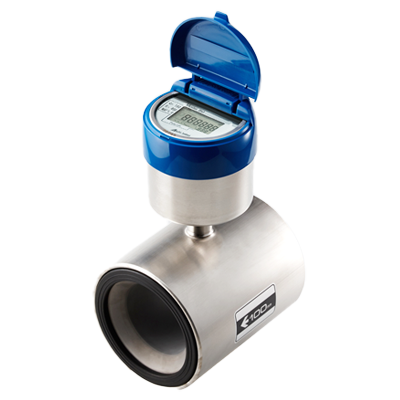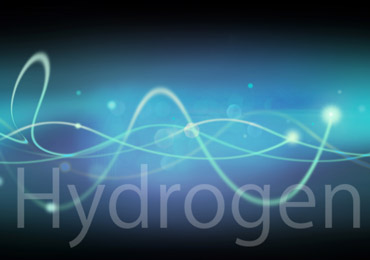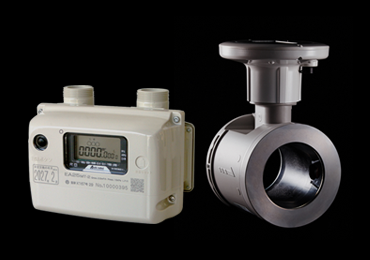
Principle and technology of Electromagnetic Flowmeter
As a manufacturer of fluid measuring instruments, Aichi Tokei Denki produces measuring instruments that apply various principles. One of our most distinctive features is a series of electromagnetic flowmeters that utilize electromagnetic induction. A brief introduction to some of our proud technologies!
What is an Electromagnetic Flowmeter?
An electromagnetic flowmeter is a flowmeter that creates a magnetic field in a measurement tube by passing a current through a coil, and measures the flow rate by detecting the magnitude of the electromotive force generated according to the flow rate of the conductive liquid flowing through it. Since there are no moving parts or obstacles that impede the flow of liquid in the flow path, there is little loss of pressure and it is characterized by excellent durability. *What is a magnetic field? A magnetic field is called a magnetic field. This means that there is a magnetic field around the magnet.
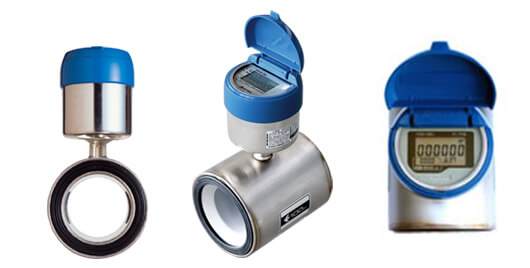
Measuring principle of "Electromagnetic Flowmeter"
A magnetic field is created within the measurement tube using an electromagnet. When a conductive liquid passes through this magnetic field, an electromotive force proportional to the flow velocity is generated in a direction perpendicular to both the direction of the magnetic field and the direction of the flow of the liquid (electromagnetic induction, Fleming's right-hand rule). . Since this electromotive force is proportional to the flow velocity as shown in the formula on the right, the passing volume can be calculated by multiplying it by the cross-sectional area of the measurement tube.
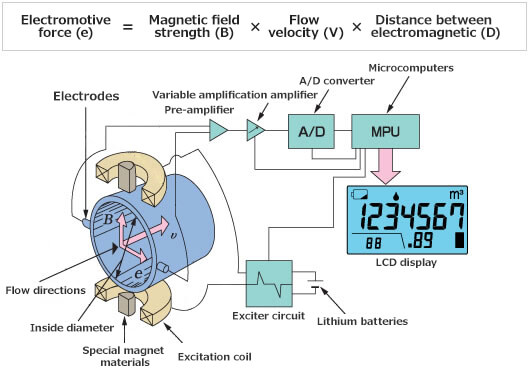
The world's first "Residual magnetic excitation method"
If you look at the power consumption of a general electromagnetic flowmeter, most of it is used in the excitation part (for example, the coil) necessary to create the magnetic field. In other words, a magnetic field was created by continuously passing current through the excitation coil.
In contrast, with the "residual magnetic excitation method" developed by our company, current is passed from a certain direction through an excitation coil containing a special magnetic material. Then, the magnetic material becomes a N-S magnet with polarity depending on the direction of the current. This magnetic material has a certain coercive force and remains a magnet even when the current is turned off. This method uses this phenomenon of residual magnetism to generate a magnetic field.
Since this method can create a magnetic field without the need for continuous current flow, power consumption has been drastically reduced to an extremely low value of 1/10,000 compared to conventional methods, and the built-in lithium battery has enabled continuous measurement for 10 years.
Over 180 patents related to electromagnetic flowmeters
Over 180 patent applications were filed during the development process. This includes power-saving technologies, technologies that enable a wide range of measurements from minute flows to large flows, and technologies for disposable measurement units used in the medical field, etc. The development of one product generates various ideas and technologies that lead to the development of the next product. Aichi Tokei Denki will continue to develop these ideas and core technologies to enhance the "performance" that humans need. ”
The lineup of various flowmeters and flow rate sensors is ``25 types''.
In 1983, we released the world's first two-wire electromagnetic flowmeter, which achieved power consumption 1/100 times lower than conventional products. Furthermore, in 1992, we launched the world's first electromagnetic water meter that could operate for 10 years with a built-in battery and achieved extremely low power consumption, less than 1/10,000 times that of conventional products. , a non-full electromagnetic flow meter that can measure a wide range of flow rates from non-full to full water, a small electromagnetic flow sensor that can handle chemical liquids and is suitable for integration into equipment, and has overcome the weaknesses of electromagnetic methods, such as foreign matter and deposits on electrodes. There are 25 types of electromagnetic flowmeters and electromagnetic flow sensors, including capacitive electromagnetic flow monitors, suitable for various sites. Our extensive lineup is used for a variety of applications.
■ Flow Meters and Related Products|Click here to see the lineup of electromagnetic flowmeters
■ History|History
Inquiries about research and development of the latest technologies
Aichi Tokei Denki Co.,Ltd.
Please contact us using the General Inquiry Form.
